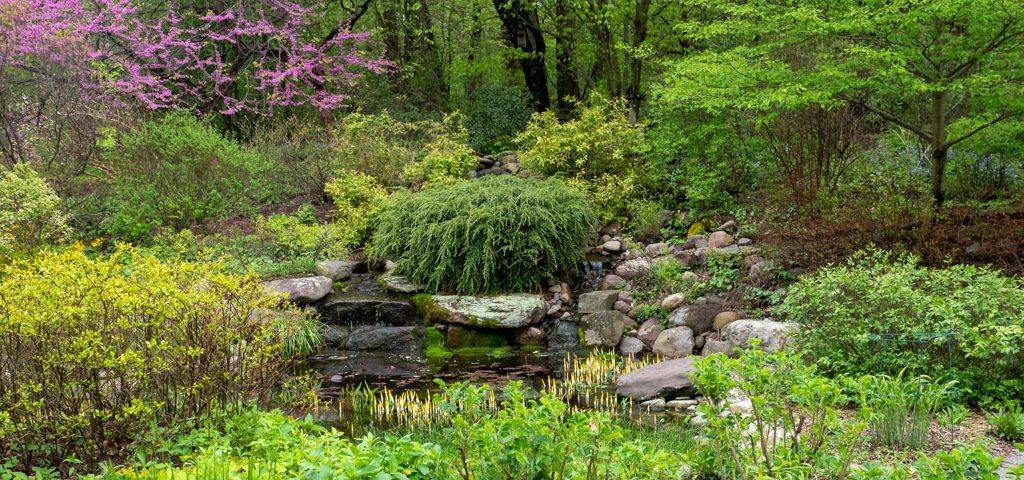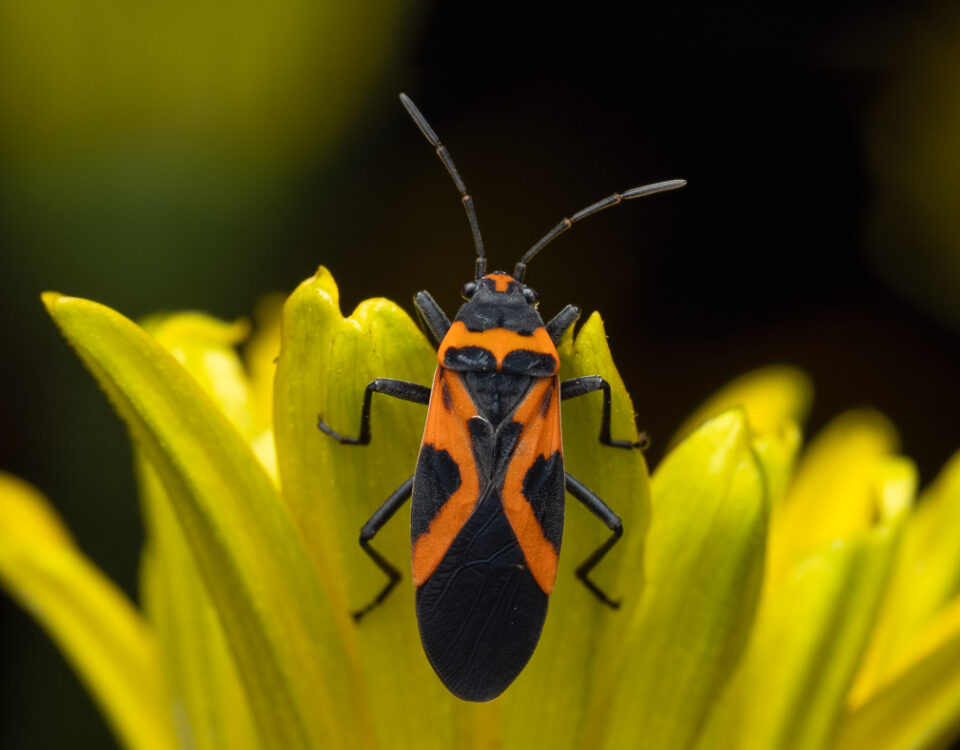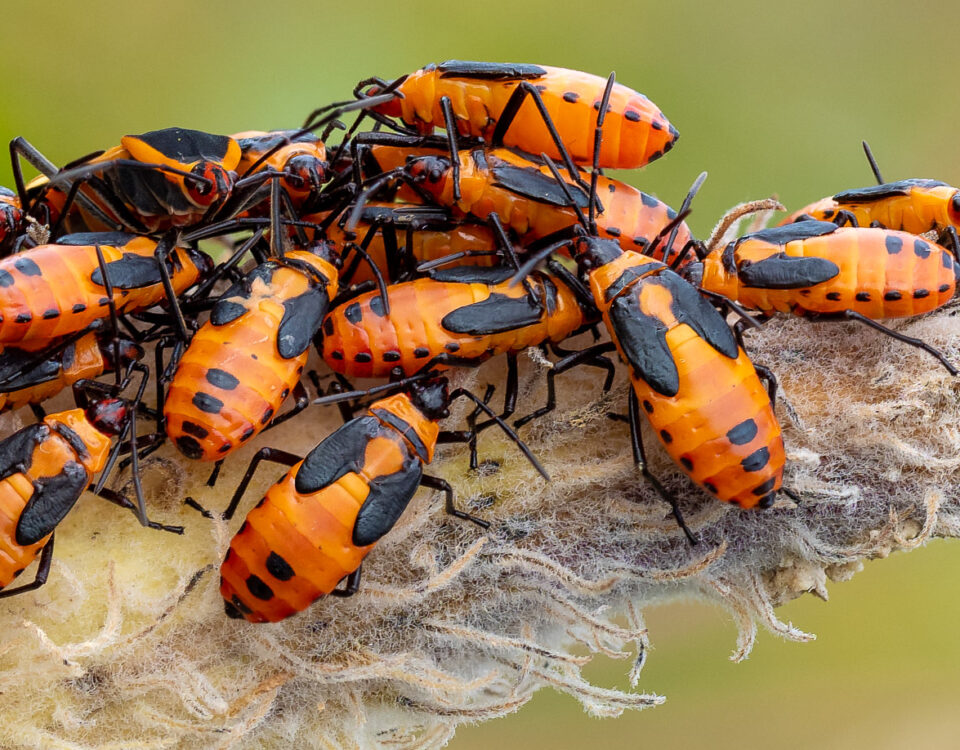Why Landscape with Native Plants? Part 1

Beetles as Pollinators
January 14, 2021
Gorgeous grass moth
August 8, 2022Why should you choose native plants for your landscapes? Because you truly can make a difference that will have a positive impact on our environment. There are many good reasons for landscaping with native plants, but the most fundamental and compelling...
Native plants are foundational to supporting life on earth
Native plants are the base of the food chain that supports wildlife
Native plants are the essential framework of healthy plant communities and resulting functioning ecosystems
Put these together and life on earth relies on the food chain started by native plants and on the functioning ecosystems that are powered by healthy native plant communities
Using Native Plants NOW is vastly more important than ever
Many of us are aware of the loss of natural areas (and thus native plants). However, I suspect that the extent of that cumulative loss is greatly under-appreciated. Here’s a “big picture” view for the contiguous “lower 48 states” - around 2/3 of all natural area lands combined have disappeared since colonization. Wow!
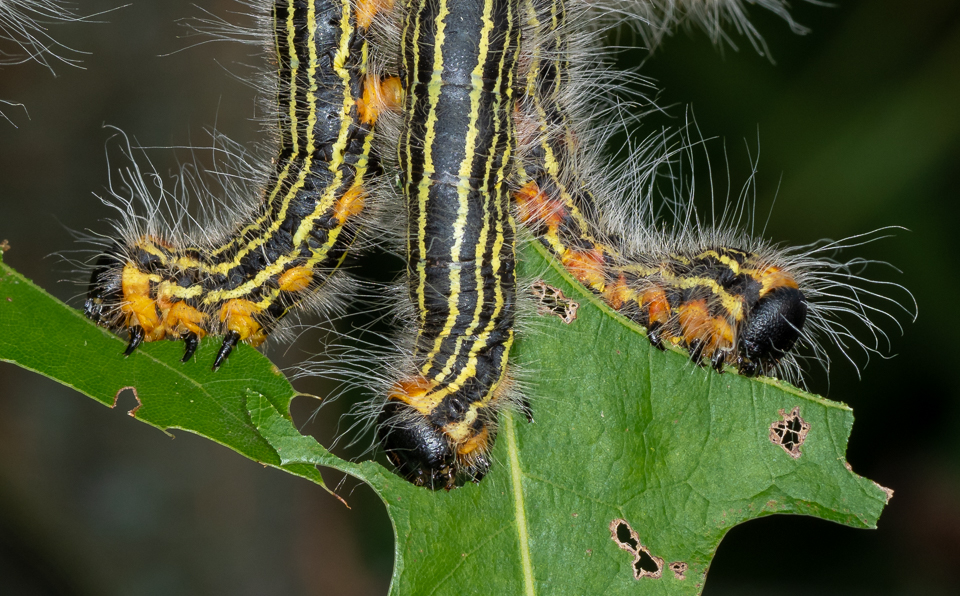
Datana caterpillars munching on a White Oak leaf (Quercus alba)
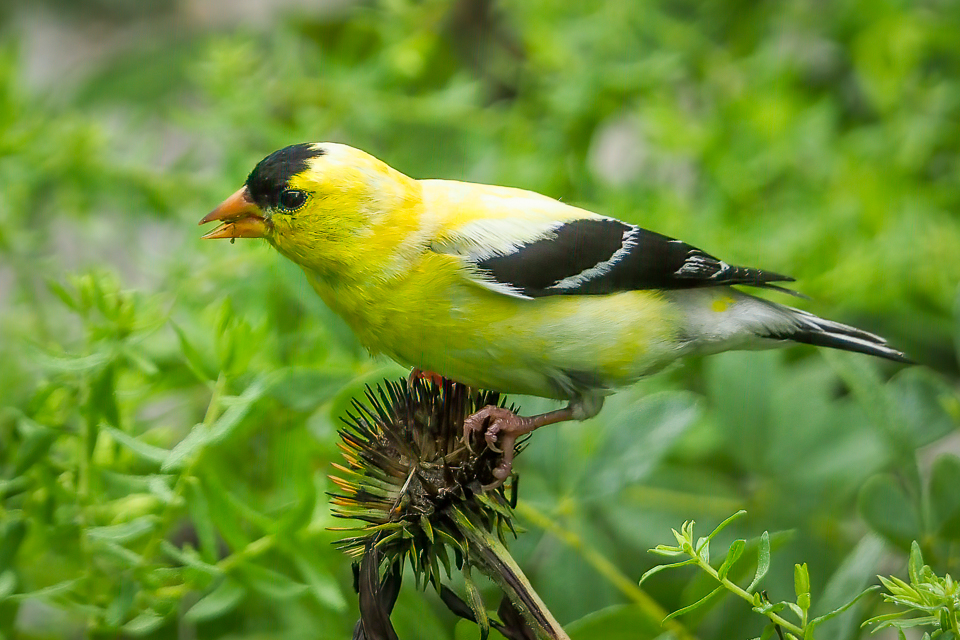
American Goldfinch eating Purple Coneflower (Echinacea purpurea) seeds
A note on the definition of a native plant. The USDA defines it as “a plant that is a part of the balance of nature that has developed over hundreds or thousands of years in a particular region or ecosystem.” Here in the eastern US the period between the last glaciation and human impact (500ish years) is generally considered native. However, translating that broad definition to plant species level is cause for much debate and disagreement. Complicating matters, rapid climate change is seriously impacting ecosystems. It’s also worth keeping in mind that nativism includes not only geographic area but also site-specific habitat features. Finally native ranges have nothing to do with political boundaries.
Native plants are the Base of the Wildlife Food Chain

Cedar Waxwing about to swallow a Serviceberry fruit (Amelanchier canadensis)
Our planet is powered by the sun, and plants convert the sun’s solar energy into foods that are the “base” of a food chain powering most life on earth. Most people understand that our food is based on plants - either directly as vegetables and fruit or indirectly in the form of animals that are fueled by plants. But what about wildlife?
Wildlife rely on plants as their food source in the same way. For example, consider the most fundamental behaviors of insects. Many of them eat plant parts including leaves, nectar, or roots for survival. Those plant eaters in turn, become critical food for other insects (and animals) further up the food chain. In addition, some insects pollinate plants resulting in fruits and seeds for consumption as well as reproduction of more plants to sustain the ecosystem.
Summing up - native plants and native wildlife have co-evolved to create the highest functioning food chains. Why is this important? Because these food chains are one of the primary engines driving ecosystem functions.
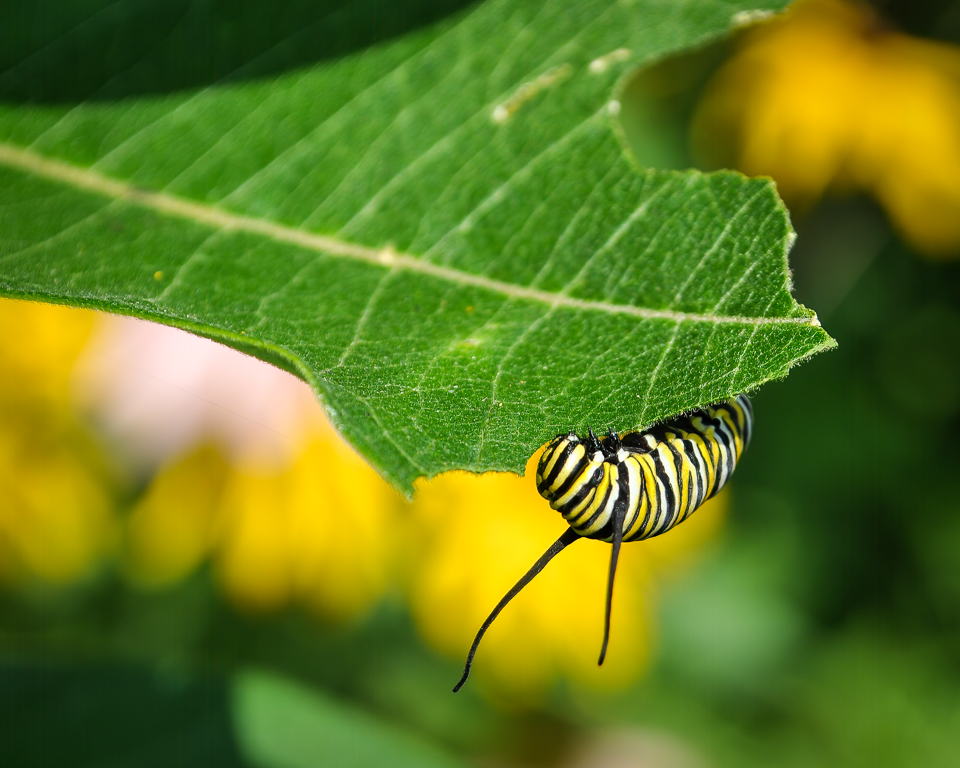
Monarch caterpillars require milkweed species leaves for survival
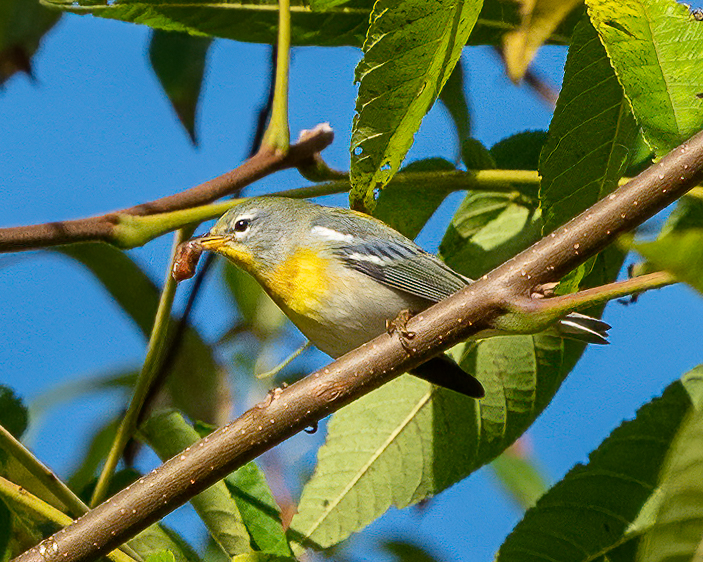
Northern Parula with a fat larva about to become nestling food

Bold Jumping Spider with a Calligrapher Flower Fly prey
How do native plants fit in and why are they critical? Wildlife and plants have co-evolved over millennia, creating the tremendous diversity that exists today. Co-evolution has resulted in close symbiotic relationships between myriad plants and wildlife. Studies have confirmed that native wildlife vastly prefer native plants as their food source. In fact, wildlife often require the specific nutrients or other attributes of one or a narrow range of plant species for survival.
Insects frequently require specific host plants as a food source for their larvae to develop. For example, in the Eastern US, about 25% of native bees require the pollen of a specific native plant species. Even when insects are less picky, they still overwhelmingly choose plants they co-evolved with as their host plants. Introduced plants rarely function as host plants for native insects, even though some may provide food nourishment such as nectar.Upland Ironweed (Vernonia glauca) slideshow to illustrate native plant importance
Click on an image to activate a slideshow with titles and captions.
Native plants are the Foundation of Functional Ecosystems
An ecosystem is a highly complex set of interactions between all living things comprising a habitat, working together in harmony. Ecosystem functions maintain air quality, create clean water, recycle nutrients and wastes, and much more. A healthy ecosystem has all of its numerous cycles functioning well, is supportive of the living things that naturally inhabit it, and is resilient against external disturbances. Life on earth, including humans relies on healthy, well-functioning ecosystems.
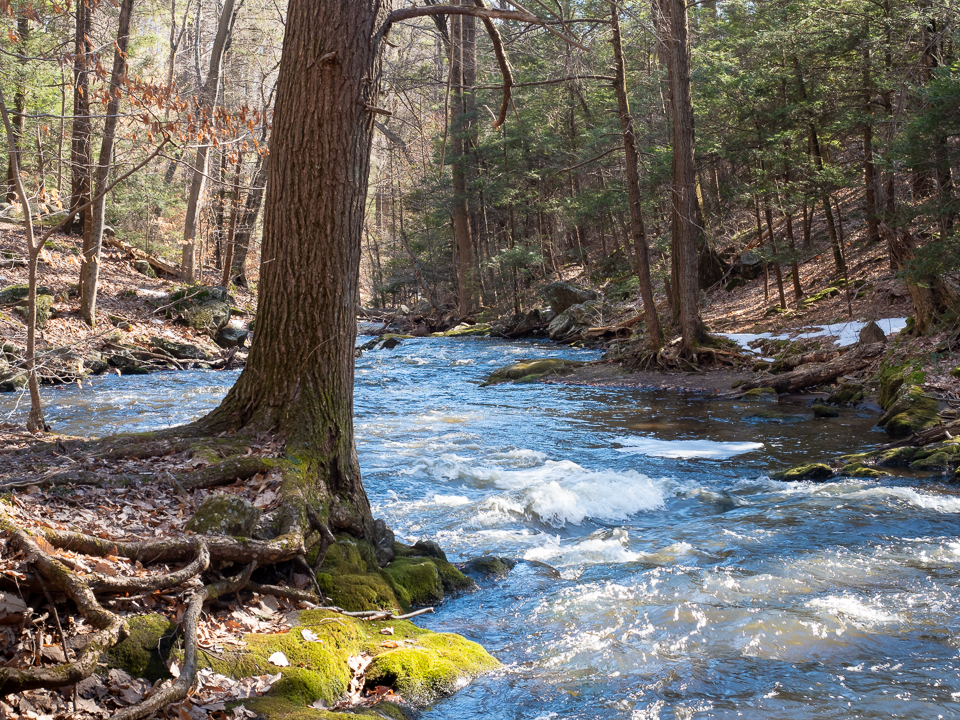
Clean water is the result of healthy ecosystems like this forest

Fungi like this Chicken Mushroom break down wood into fundamental elements for reuse
One of the key engines of ecosystem function is the wildlife food chain. This is where vast amounts of materials such as carbon are recycled for instance. Other critical cycles such as converting CO2 to oxygen are reliant on plants alone. The complex inter-relationships of co-evolved native life are the critical engine of healthy, functioning ecosystems and native plants are the basic foundation.
We Need Native Plants - Now more than ever
Choosing native plants in our gardens is more important and impactful than ever before, primarily due to habitat loss. Yes, people are increasingly using native plants in created landscapes, but most native plants inhabit natural areas. Loss of these areas has been dramatic here in the US and by association, vast numbers of native plants have been lost along with their ecosystems. According to published scientific research:
Consider the “lower 48” states over the past 500 years…
Forest land area has declined from approximately 53% to 28% - half of our forests have disappeared!
Other “Natural” land area (prairies, desert, wetlands, etc. ) has declined from approximately 42% to just 7%!
Resulting in all natural area lands combined decreasing from near 100% to approximately 35%.
You may not think that your own property has much of an impact on the greater environment, but there are so many of us now that we have the opportunity to really amplify our individual actions. All of our little pieces together are a significant amount of land. In the state of Pennsylvania, turf grass represents 6.9% of the total land area and in Maryland it’s 18%. Our little pieces of turfed yards, parks, and golf courses add up to a lot! It’s a great place for us to begin to return land to natural habitat using native plants.

A modest sized residential garden with dense layered native plant communities can result in large environmental benefits that extend past is boundaries.

